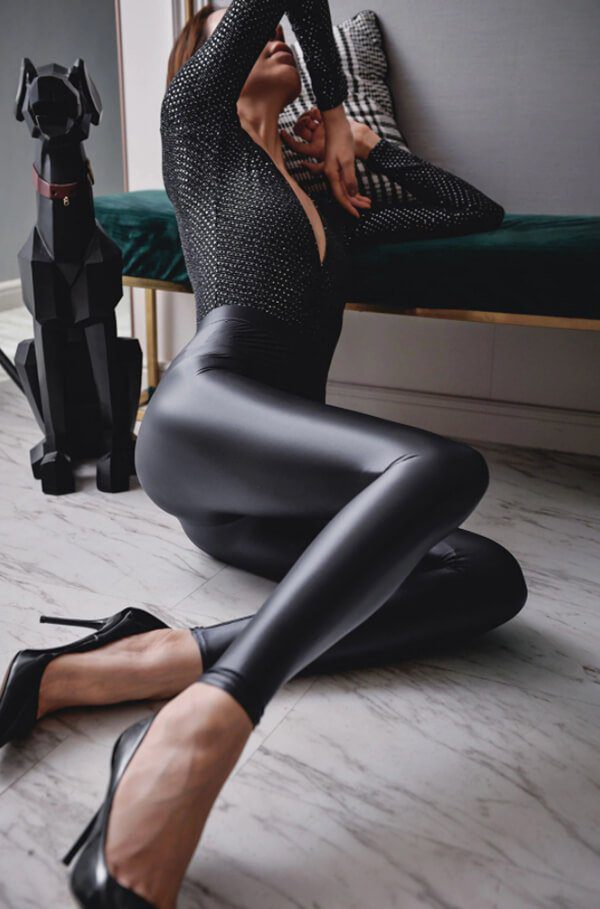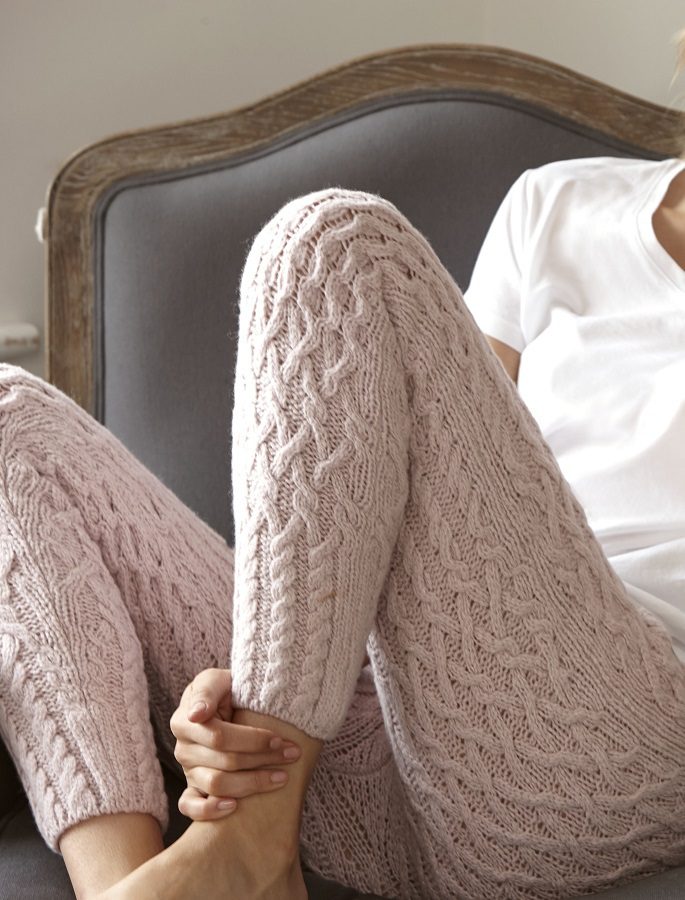Let’s be honest; leggings are brilliant. They’re versatile, affordable, timeless, and totally essential in anyone’s wardrobe.
They’re also ubiquitous, meaning that when it comes to choosing leggings, it’s easy to get overwhelmed by choice.
One of the main factors which separate different products in this category from one another is the type of material used. So let’s look at which materials make the best leggings and why this matters.
Synthetic materials

In terms of popularity, leggings made with synthetic materials rather than natural ones definitely win. There are a few reasons behind this, so let’s break it down based on the main types of manmade fabrics on the market today.
1. Polyester
Created in the 1940s and made famous in the 1970s, polyester has a whole host of advantages up its sleeve compared with the traditional alternatives.
First up, it is ideal for leggings that are designed for use during exercise since it has sweat-wicking properties, hence why the best leggings for women are almost always made using them.
Rather than the sweat we produce being trapped next to the skin or absorbed to linger in the material, polyester essentially expels it and allows it to dry in the air, thus improving the comfort of the wearer during all kinds of physical exertion.
Next, there’s the flexibility it affords wearers. If you want leggings that won’t restrict your movement and won’t need to be pressed or ironed at any point, polyester is perfect.
The main downside is that polyester leggings are prone to clinging onto the scents that our bodies unavoidably emit when we exercise, so you need to be mindful of this and wash all polyester clothing thoroughly in order to minimize any odor issues.
2. Spandex

Whether you buy it under brand names like Lycra or see it mentioned as the material elastane, there’s no getting away from the role that spandex has had in allowing leggings to complete their global domination over the past few decades.
As the name suggests, this material is intended to be very flexible, allowing it to expand with ease and snap back to its original shape without becoming overstretched in the process.
Once again, this is an ideal set of abilities that are needed for many leggings, especially those which are designed to be worn when working out.
You will usually find that spandex is paired with other synthetic or natural materials to make leggings, such as the aforementioned polyester, as well as counterparts such as nylon.
It is this blending of materials, rather than sticking to just one, which defines many of the leggings you will find on sale today. Mostly it doesn’t make sense to restrict designs in this way, as better outcomes are achieved when spandex joins forces with its contemporaries.
Aside from the fact that spandex gives you more freedom of movement, it also produces that all-important figure-hugging look, which leggings also bring to the table. So whether you are lounging about the house or trying to get noticed while out and about, you can thank spandex for giving you the best of both worlds.
Natural materials

Not everyone likes the look and feel of synthetic fabrics for leggings or any other type of clothing, for that matter. Luckily there are always natural materials to counterbalance this trend, so let’s cover the major players in this arena.
1. Cotton
Cotton is the king of natural fabrics, and there is an army of benefits to reel off when discussing it. Its durability is unquestionable, enabling it to survive plenty of use and go through myriad wash cycles before it eventually gives up the ghost.
Cost is also a consideration, as cotton is incredibly affordable in most cases because it is produced in such large volumes worldwide. So even at a time when synthetic leggings are pumped out by their billions, cotton equivalents can remain competitive.
Then there’s the lightweight nature of cotton, which means that simpler garments like leggings it is a good choice. While synthetic materials might feel a bit cloying during the warmer months of the year, cotton is not a burden at all, so long as you don’t get it wet.
This brings us onto the first conundrum caused by cotton leggings; they aren’t great with moisture. Sweat will take longer to evaporate from them, so leggings made from cotton are more appropriate if you are using them as loungewear rather than activewear.
The other flaw is that if the cotton fabric is particularly thin, it can be partly see-through. If you’re only wearing leggings and nothing else on your bottom half, then be prepared for the possibility of a bit more than a visible panty line!
Higher quality, thicker cotton leggings will not have this problem, of course, so look out for this when shopping around.
2. Wool

Finally, wool is a natural material that is best used for leggings which are worn to keep you warm. Its fuzzy surface enables it to capture lots of air, which acts as an insulator and can keep out winter chills with ease.
Wool is additionally appealing because it is resistant to taking on stains, so long as it is properly cleaned and cared for, as well as being less prone to absorbing smells with repeated use, unlike polyester.
Wearing wool leggings under your outer pants during the winter will definitely ensure you are comfortable even in low temperatures. And of course, for everyday relaxation at home, wool leggings are a good investment, particularly if you feel the cold more than most people.
Wool clothing is a bit more high maintenance than its rivals, but as long as you adhere to the washing instructions included with leggings made from this material, you should be fine. Washing on a wool-specific setting, and avoiding high-temperature programs as well as driers, is best.
Final thoughts
So what are the best materials for leggings? Well, as you can see, that depends on what you want to get out of them.
From synthetic fabrics like polyester and spandex for comfortable workouts to cotton and wool for low tempo chilling out, there is something for everyone out there!


